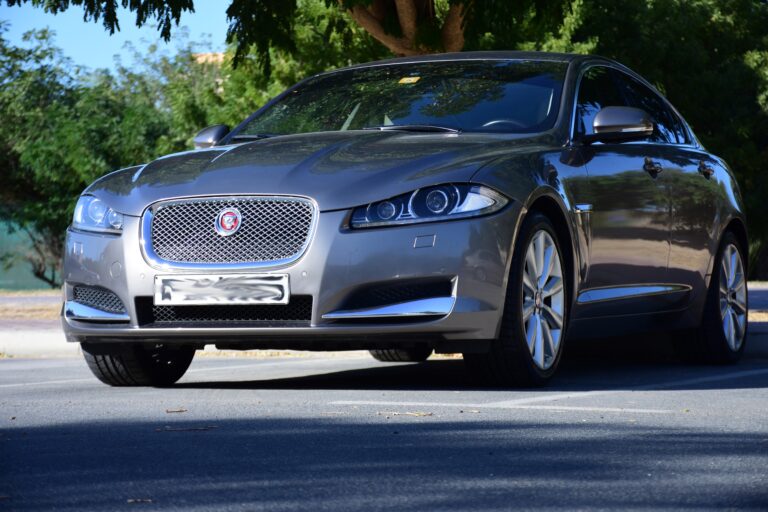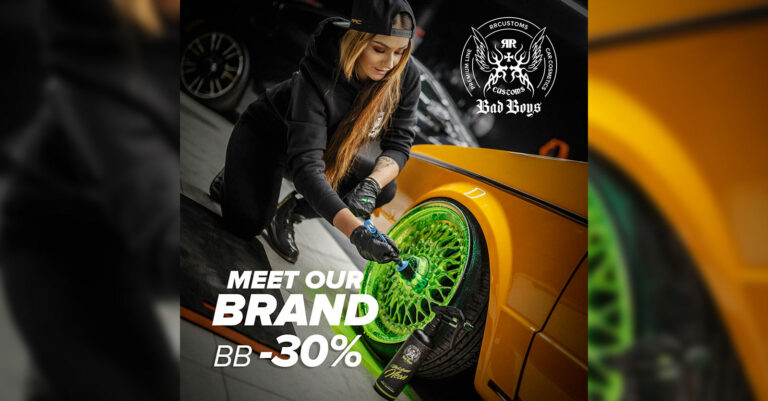What’s The Best Car Speaker Brand: A Comprehensive Guide to Elevating Your In-Car Audio
What’s The Best Car Speaker Brand: A Comprehensive Guide to Elevating Your In-Car Audio cars.truckstrend.com
Imagine cruising down the open road, your favorite song filling the cabin with crystal-clear highs, rich mids, and thumping bass. For many, the factory-installed car audio system simply doesn’t deliver this immersive experience. It often lacks detail, dynamic range, and the sheer impact that truly brings music to life. This is where upgrading your car speakers comes into play – they are the ultimate voice of your car’s audio system, translating electrical signals into the sound you hear and feel.
But with a myriad of brands, types, and specifications, the question quickly arises: "What’s the best car speaker brand?" The answer, as with many things in the world of audio, isn’t a simple one-size-fits-all. "Best" is subjective, deeply personal, and hinges on a confluence of factors including your budget, musical preferences, vehicle specifics, and overall audio aspirations. This comprehensive guide will navigate the complex landscape of car speaker brands, equipping you with the knowledge to make an informed decision and transform your daily commute into an unparalleled auditory journey.
What’s The Best Car Speaker Brand: A Comprehensive Guide to Elevating Your In-Car Audio
Understanding "Best": It’s Not One-Size-Fits-All
Before diving into specific brands, it’s crucial to understand why "best" is such a nuanced term in car audio. What might be perfect for an audiophile seeking absolute sonic purity might be overkill for someone who simply wants a significant upgrade from their stock speakers. Consider these foundational aspects:
- Your Budget: Car speakers range from under $50 for a basic pair to several thousand dollars for high-end component sets. Defining your budget upfront helps narrow down the options considerably.
- Your Musical Taste: Do you crave deep, resonant bass for hip-hop and EDM? Or do you prioritize vocal clarity and intricate instrument separation for jazz and classical music? Different brands and speaker types excel in different areas.
- Your Vehicle: Speaker sizes, mounting depths, and available locations vary widely between cars. What fits a sedan might not fit a truck, and vice versa. Compatibility is paramount.
- Your Current System & Future Plans: Are you just replacing speakers, or do you plan to add an amplifier, a new head unit, or a subwoofer? The "best" speakers for a basic head unit might be different from those paired with a high-power amplifier.
- Desired Sound Profile: Some brands are known for a "warm" sound, others for "bright" highs, and some for powerful "punchy" bass. Understanding these characteristics can guide your choice.

Key Factors to Consider When Choosing Car Speakers
Beyond the brand name, several technical specifications and design choices impact a speaker’s performance and suitability for your needs.
- Speaker Type:
- Coaxial (Full-Range) Speakers: These are the most common and easiest to install. They combine all speaker drivers (woofer, tweeter, and sometimes a mid-range) into a single basket. Ideal for direct factory replacements and offer a noticeable improvement over stock.
- Component Speakers: These sets separate the woofer, tweeter, and often a dedicated crossover network. The separate tweeters can be mounted in optimal locations (e.g., dashboard, A-pillars) for better sound staging and imaging, creating a more realistic sound field. They offer superior sound quality but require more complex installation.
- Speaker Size: Measure your existing speakers or consult your car’s manual/online resources (like Crutchfield’s vehicle selector) to determine compatible sizes (e.g., 6.5", 6×9", 5.25", 4").
- Power Handling (RMS vs. Peak):
- RMS (Root Mean Square) Power: This is the continuous power a speaker can handle reliably. It’s the most important rating. Match your speaker’s RMS rating to your amplifier’s RMS output.
- Peak Power: The maximum power a speaker can handle for very short bursts. Less critical than RMS.
- Sensitivity: Measured in decibels (dB), sensitivity indicates how efficiently a speaker converts power into sound. Higher sensitivity (e.g., 90dB+) means the speaker will play louder with less power, making it a good choice if you’re sticking with a factory head unit. Lower sensitivity speakers often require more power from an aftermarket amplifier to shine.
- Impedance: Typically 4 ohms for car speakers. Ensure your speakers’ impedance matches your amplifier’s stable output impedance.
- Material Quality:
- Cone Material: Affects bass response and overall sound. Common materials include polypropylene (durable, good bass), woven glass fiber, carbon fiber, or treated paper.
- Surround Material: Connects the cone to the speaker basket. Rubber (butyl rubber) is durable and offers good excursion; foam is lighter but less durable.
- Tweeter Material: Influences high-frequency sound. Silk (warm, smooth), aluminum (bright, detailed), or titanium (very bright, sometimes harsh) are common.
Top Contenders for "Best" Car Speaker Brands (Categorized by Strength)
While "best" is personal, certain brands consistently receive high praise for their quality, innovation, and sound characteristics. Here’s a breakdown by general category:
1. Premium / Audiophile Grade (For the Discerning Listener):
- Focal: A French brand renowned for its exceptional clarity, precise imaging, and natural sound reproduction. Focal speakers (especially their Utopia and K2 Power lines) deliver incredible detail and transparency, making them a favorite among audiophiles. Expect to pay a premium.
- JL Audio: A leading American brand known for robust, clean bass and overall dynamic sound. JL Audio’s speakers offer a powerful yet refined listening experience, excelling across various music genres. Their C5 and C7 series are highly regarded.
- Hertz: An Italian brand that brings a dynamic and energetic sound to the car audio landscape. Hertz speakers are celebrated for their detail, wide frequency response, and ability to handle significant power, delivering an engaging listening experience.
- Morel: An Israeli company specializing in handcrafted, high-fidelity drivers. Morel speakers are famous for their warm, natural sound, particularly their smooth mid-range and exquisite vocal reproduction. If you value musicality and warmth, Morel is a top choice.
- Audison: Another Italian powerhouse, Audison offers ultra-high-fidelity speakers designed for the most demanding listeners. Their products are synonymous with precision, accuracy, and sophisticated sound reproduction, often requiring expert tuning.
2. Mid-Range / Excellent Value (Balancing Performance and Price):
- Alpine: A Japanese giant in car audio, Alpine offers a wide range of speakers known for their consistent quality, balanced sound, and reliability. They are excellent all-rounders, providing a significant upgrade over factory speakers without breaking the bank.
- Rockford Fosgate: An American brand synonymous with power and punch. Rockford Fosgate speakers are excellent for those who like their music loud and with impactful bass. Their Punch and Power series offer great performance and durability.
- Kicker: Another American brand, Kicker is popular for its high-output speakers that deliver strong bass and clarity. They are a go-to for enthusiasts who want to "feel" their music and enjoy loud listening levels.
- Pioneer: A Japanese electronics veteran, Pioneer offers a vast selection of car speakers that provide good value for money. Their speakers often deliver a lively sound with decent bass response, suitable for a wide range of music.
- Kenwood: Also from Japan, Kenwood speakers offer a good balance of performance and affordability. They provide clear sound and decent bass, making them a solid choice for a noticeable upgrade from stock.
3. Entry-Level / Budget-Friendly Upgrades (Great Bang for Your Buck):
- JBL: A well-known audio brand, JBL offers reliable and efficient car speakers that provide a clear and bright sound. They are a popular choice for easy factory upgrades and deliver good performance for their price point.
- Infinity: Often grouped with JBL (as they are part of the Harman International family), Infinity speakers are known for their high sensitivity, meaning they play louder with less power, making them ideal for use with factory head units. They offer clear highs and decent bass.
- Sony: While not always the top choice for hardcore audiophiles, Sony offers accessible and affordable car speakers that provide a decent step up from basic factory units. They are widely available and simple to install.
Installation Considerations & Practical Tips
Choosing the "best" speakers is only half the battle; proper installation is crucial for maximizing their performance.
- DIY vs. Professional Installation:
- DIY: Possible for coaxial speakers with basic tools (screwdrivers, wire strippers, panel removal tools). Requires research for wiring diagrams and speaker adapter plates. Can save money.
- Professional: Recommended for component systems, custom fabrication, or if you’re uncomfortable with car electronics. Ensures optimal sound staging, proper wiring, and sound deadening, leading to superior results.
- Sound Deadening: Applying sound deadening material (e.g., butyl rubber mats) to your car’s doors and trunk is arguably as important as the speakers themselves. It reduces road noise, eliminates rattles, and significantly improves bass response and overall clarity by creating a more acoustically dead environment for your speakers to perform in.
- Amplification: While many aftermarket speakers will sound better than stock even with a factory head unit, adding an external amplifier is highly recommended. An amplifier provides clean, consistent power, allowing your new speakers to reach their full potential in terms of volume, clarity, and dynamic range.
- Tuning: Once installed, proper tuning (setting crossovers, equalizing frequencies) can dramatically enhance your system’s sound. This is often best left to experienced installers or done with dedicated audio processors.
Challenges and Solutions
- Compatibility Issues: Always double-check speaker size, mounting depth, and impedance compatibility with your vehicle and existing audio components. Websites like Crutchfield offer excellent fitment guides.
- Power Mismatch: Undervolting speakers (not enough power) leads to distorted, weak sound. Overpowering (too much power) can damage them. Match RMS ratings between speakers and amplifier.
- Poor Installation: Rattles, buzzing, and poor sound imaging are common signs of bad installation. Take your time with DIY or invest in professional help.
- Budget Constraints: If budget is tight, prioritize upgrading your front speakers first, as they deliver the primary sound stage. You can add a subwoofer later for deeper bass.
- Overwhelming Choices: Start by defining your budget and desired sound profile. Then, research brands known for those characteristics. Read reviews, but remember that personal listening experience is key.
Price Table: A Snapshot of Top Car Speaker Brands
This table offers a general guide to pricing and characteristics. Actual prices vary widely based on specific models, sales, and retailers. Prices are approximate for a pair of coaxial or component speakers.
| Brand | Typical Price Range (Per Pair) | Key Strengths/Sound Profile | Ideal User |
|---|---|---|---|
| Focal | $$$$ ($500 – $2000+) | Unparalleled clarity, detail, natural, reference-grade sound | Audiophiles, those seeking ultimate fidelity, custom builds |
| JL Audio | $$$ ($300 – $1000+) | Powerful, clean bass, balanced, robust build, dynamic | Bass enthusiasts, all-round quality seekers, premium upgrade |
| Hertz | $$$ ($250 – $1000+) | Dynamic, detailed, energetic sound, high power handling | European sound lovers, those wanting impact and clarity |
| Audison | $$$$ ($600 – $2500+) | Extremely refined, precise imaging, high fidelity, neutral | Purists, high-end custom installers, competitive audio |
| Morel | $$$ ($200 – $800+) | Warm, natural, excellent mid-range and vocal reproduction | Lovers of warm, musical sound, vocal clarity priority |
| Alpine | $$ ($100 – $400) | Reliable, balanced sound, good power handling, consistent | General upgrades, reliable performance, good value |
| Kenwood | $ ($50 – $200) | Good value, decent bass for the price, widely available | Budget-conscious, good factory upgrade, versatile |
| Pioneer | $ ($50 – $250) | Wide range, punchy bass, good value for money, lively | Versatile, good for various music genres, entry-level upgrade |
| Rockford Fosgate | $$ ($100 – $500) | Powerful, impactful bass, great for loud systems | Bass-heads, those wanting high SPL, durable systems |
| Kicker | $$ ($80 – $400) | Strong bass, high sensitivity, good for loud listening | Loud listeners, bass-centric setups, efficient power use |
| JBL | $ ($40 – $150) | Clear, bright sound, good efficiency, reliable | First-time upgraders, factory replacements, clear highs |
| Infinity | $ ($40 – $150) | Similar to JBL, good sensitivity, clear highs, balanced | Budget-conscious, clear sound preference, efficient |
| Sony | $ ($30 – $100) | Affordable, decent factory replacement, accessible | Basic upgrades, very tight budget, simple installation |
Frequently Asked Questions (FAQ)
Q1: Do I need an amplifier for aftermarket speakers?
A: While many aftermarket speakers will play with your factory head unit, an amplifier is highly recommended to unlock their full potential in terms of volume, clarity, and dynamic range, especially for component speakers or low-sensitivity models.
Q2: What’s the difference between coaxial and component speakers?
A: Coaxial speakers have all drivers (woofer, tweeter, etc.) combined into one unit, making them easy to install. Component speakers separate the woofer, tweeter, and crossover for superior sound staging and imaging, but require more complex installation.
Q3: Can I install new speakers myself?
A: Yes, coaxial speakers are relatively straightforward for a DIY enthusiast with basic tools and some online research. Component speakers, however, are more complex and often benefit from professional installation for optimal results.
Q4: How important is sound deadening?
A: Very important! Sound deadening material reduces road noise, eliminates vibrations, and significantly improves the bass response and overall clarity of your speakers by providing a stable, acoustically optimized environment.
Q5: Will new speakers work with my factory head unit?
A: Yes, they will. However, factory head units often lack the power and processing capabilities to fully drive aftermarket speakers, especially higher-end ones. An aftermarket head unit or amplifier is often recommended for the best performance.
Q6: What does RMS power mean?
A: RMS (Root Mean Square) power is the continuous power a speaker can handle without damage. It’s a more realistic and important rating than "peak power," which is only for very brief bursts. Always match your speaker’s RMS rating to your amplifier’s output.
Q7: Should I upgrade my front or rear speakers first?
A: Always prioritize your front speakers. They deliver the primary sound stage and imaging for the driver and front passenger, which is crucial for an immersive listening experience. Rear speakers are typically for fill or for rear passengers.
Conclusion
The quest for "the best car speaker brand" is ultimately a personal journey, guided by your unique listening preferences, budget, and vehicle specifics. There isn’t one single "best" brand, but rather a spectrum of excellent manufacturers, each with their own strengths and sonic signatures.
By understanding key factors like speaker type, power handling, sensitivity, and material quality, and by considering the reputable brands highlighted above, you can make an informed decision. Remember that proper installation, including sound deadening and potentially an amplifier, is just as crucial as the speakers themselves. Investing time in research and planning will transform your car’s audio system from a mere sound producer into a captivating concert hall on wheels, making every drive an absolute pleasure.




